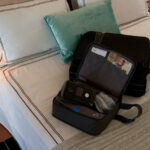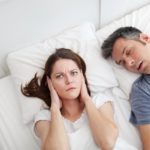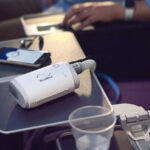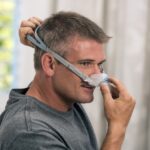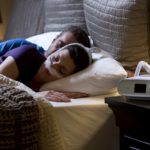The majority of sleep apnea sufferers’ treatment plans include the use of a continuous positive airway pressure (CPAP) machine. The gadget is quite effective and can significantly alleviate symptoms. Many individuals, however, discover that travelling with a CPAP might be difficult if you aren’t prepared.
Whether you’re travelling an hour or flying to another nation, it’s critical to give yourself the best opportunity of sleeping well and actually enjoy your trip. Keeping your CPAP machine at home may seem tempting, but it will endanger your health. Travelling with sleep apnea does not have to be difficult and here are the tips you might find helpful for your next trip
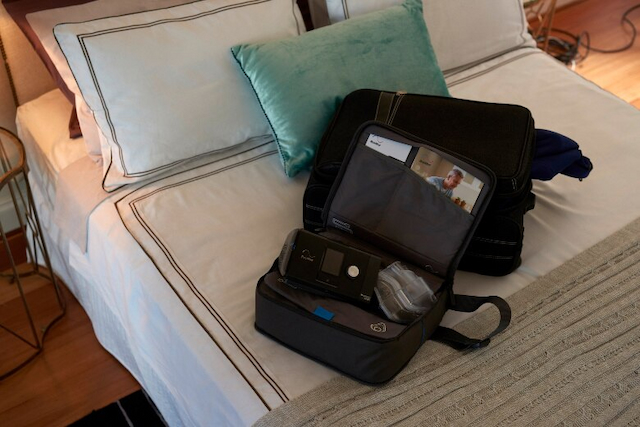 Source: mhsblogs.com
Source: mhsblogs.com
Travelling with Sleep Apnea
Before leaving the house for a trip, get a prescription from your doctor for necessary sleep apnea devices and accessories, such as automatically-adjustable travel CPAP machines, humidifiers, masks, filters, and tubing. Keep the prescription on hand in case you need to purchase any equipment while you’re away.
When it comes to packing, the most important thing to remember is an extension chord. In a new city, you never know where a plug will be, and hotel rooms frequently have limited outlets or room to plug in extra equipment. Many hotels will supply an extension cord if you ask, but it’s recommended to bring your own just in case.
Your pillow is also an important packing item among the other things you can do to improve your sleep. While the concept of a beautiful, fluffy hotel cushion sounds appealing, they are often less than optimal for persons who suffer from sleep apnea. Bring any supporting or specialist sleep apnea pillows you have at home. You’ll sleep better if your pillow can handle your CPAP mask while still keeping you comfortable.
It’s best to bring your CPAP with you when flying. Because CPAP machines are medical devices, they can be carried in addition to the regular number of luggage allowed on an airline. To avoid complications, obtain a doctor’s certificate stating that the device is medically essential. However, make sure to double-check your airline’s policies.
Travel CPAP Machines
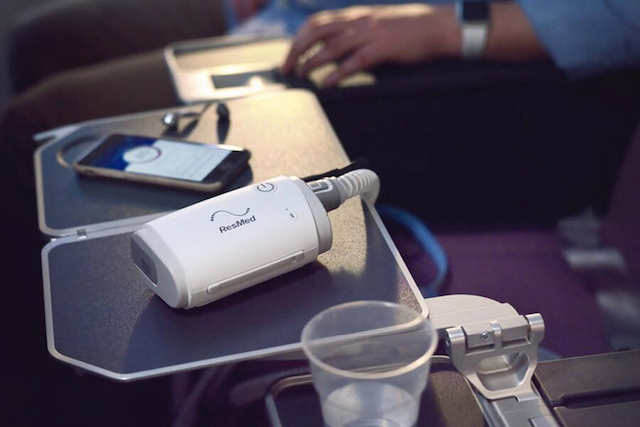 Source: absoluterespiratorycare.com
Source: absoluterespiratorycare.com
If you own one, you are already aware that typical CPAP travel machines are not small. They’re instead large, cumbersome, and difficult to pack or carry, especially when flying. Travel CPAP machines, fortunately, have been developed to make travelling with sleep apnea much more convenient.
These devices provide all of the functions and effectiveness of your home device, but they’re intended to fit easily in carry-on luggage and help you pass through airport security faster. The packaging itself is normally much smaller than a traditional CPAP machine and the device is generally lightweight and small enough to fit in a backpack.
These machines also come with an array of other features, including the ability to be powered by batteries, USB ports for charging devices while you sleep and options to track your therapy progress. Additionally, many models are compatible with a smartphone app, allowing you to monitor your sleep data on the go. The more advanced models even come with a heated humidifier, something that was once considered impossible in such a small package.
Flying with Sleep Issues
For persons who suffer from sleep difficulties, travelling on an aeroplane may present new challenges. Snoring may make you feel self-conscious if you sleep with strangers, for example. If you snore, consider utilising Breathe Right nose strips during your journey. Although they are not always successful, they may help open your nose and minimise snoring. Fortunately, most snores will be drowned out by the boom of the jet engines.
If you suffer from sleep apnea, you will most likely be unable to utilise your continuous positive airway pressure (CPAP) during the journey. (However, you should bring it on the plane anyhow to avoid losing it.) Sitting upright reduces the likelihood and severity of sleep apnea. It should be okay not to treat it for the duration of a flight, and you are unlikely to experience any immediate health consequences. If you use an oral appliance to treat apnea, you may be able to insert this to help you sleep.
Long flights can be especially uncomfortable for people who suffer from restless legs syndrome (RLS). There are several strategies to alleviate these sensations when travelling, including diverting hobbies such as crossword puzzles and walking about or massaging legs. Occasional use of medications like opioids or gabapentin may also be beneficial.
Sleeping Accessories
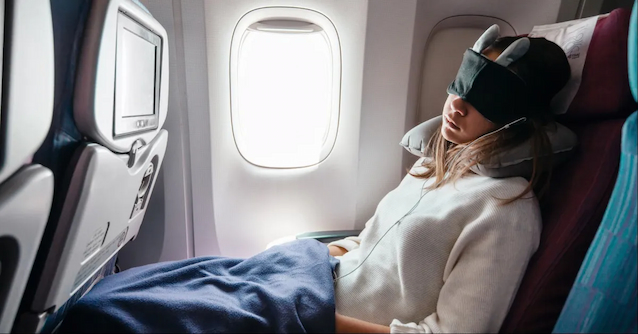 Source: financebuzz.com
Source: financebuzz.com
If you’ve ever looked through the in-flight magazine or visited an airport terminal shop, you may have noticed that there are a variety of accessories available to help you sleep while flying. These can range from inexpensive earplugs to expensive noise-cancelling headphones. What are your choices for improving your sleep?
Most airlines will supply a pillow or blanket, especially if you are flying overnight on a red-eye journey. Small pillows can also be brought on board if they fit in your carry-on luggage. A c-shaped travel pillow that goes around the back of the head and rests on the shoulders is popular. These can be inflatable, memory foam-based, or contain microbeads. The majority of these are reasonably priced, ranging from $10 to $40. There are also larger, wedge-shaped pillows that serve as a cushion and allow you to lean forwards onto them.
You may wish to block out unpleasant light in addition to selecting the correct pillow. It may be beneficial to lower the window shades, especially if you have control over them. You can reduce the effects on your circadian rhythm by avoiding light from laptops, phones, and other devices. Wearing an eye mask may also help to prevent light disturbance.

